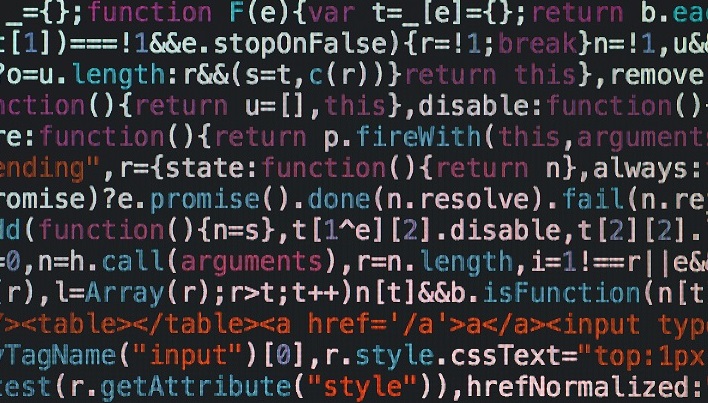#1. Social Media Listening
Apart from being a medium for staying connected, social media has also become a platform for branding and marketing. Customers talk about their favorite brands and share their experiences all across social media. Leveraging sentiment analysis of the data available on social media with the help of text analytics tools helps to understand the positive or negative sentiments of users towards products/services and the impact and relations of brands with their customers. Furthermore, social media listening can enable brands to build trust with customers.
#2. Sales & Marketing
Prospecting is a nightmare for a sales team. Sales teams make every effort to improve sales and performance. According to a MonkeyLearn study, 27 % of sales agents spend more than an hour a day on data entry work instead of selling, signifying critical time is lost in administrative work and not closing deals.
Text analytics techniques help reduce this menial work with automation while providing valuable and specific insights to nurture the marketing funnel.
To give you an idea: Chatbots are employed to cater to customer queries in real-time. Analyzing this data helps the sales team predict the likelihood of a customer buying a product, perform target marketing and advertising, and make product adjustments.
#3. Brand Monitoring
Businesses fight tooth and nail to establish and brand supremacy. Today, professionals are paid to write false or hype reviews across the internet and social media. Also, customers often write angry reviews in the spur of a moment. Such reviews often spread across the internet like wildfire and do unmitigated harm to a company’s brand image.
Negative reviews often drive away customers. Studies show, 40% of consumers are put off from buying a product/service if there is a negative review.
Visual web scrapers and web scraping frameworks in text analytics empower brand monitoring, comprehending one’s brand evolution, and pinpointing aspects affecting one’s brand in real-time, thus, enabling businesses to take necessary action immediately.
#4. Customer Service
Businesses constantly endeavor to facilitate seamless customer service. Much of the customer churn factors occur due to customer service flaws. With text analytics tools, you can scrape together customer concerns/queries and feedback to streamline customer service processes. Aside from improving responsiveness, this can also help automatically route tickets to reduce manual work and errors. To give an example: the algorithm draws a point ‘My order isn’t delivered yet’ out of customer queries – this will be compared and matched with a Delivery Issues tag automatically with the assistance of text analytics tools.
Additionally, text analytics tools will also help establish personalized customer services, employ the right person for the job, and set priorities efficiently.
#5. Business Intelligence
Although businesses can glean “what is happening?” with data analysis, they struggle to figure out “why this is happening?”. Applications of text analytics help businesses obtain context out of the numeric data and reason out why a situation has happened or is happening or what may happen in the future. Case in point, a large number of factors contribute to sales performance. While data analysis will provide one with numerical statistics, text analytics techniques will help determine why there is a drop or rise in the performance.
#6. Product Analytics
Text analytics not only helps in understanding customer needs but also helps in improving the product. Analyzing customer reviews gives a clear picture of what exactly the customer is looking for vis-à-vis a product and what they think about the competitor’s product. It enables businesses and brands to build quality products that meet customer requirements.
#7. Knowledge Management
We suffer from an overabundance of data today. Processing this behemoth data to draw actionable insights in less time is hardly possible without sophisticated technology advancements. This puts time-sensitive professions like healthcare in dire straits. However, text mining or text analytics techniques can help sort through surplus data in a short time and provide valuable insights for real-time solutions and efficiency.
#8. Email Filtering
Text mining can help detect junk, spam, or malicious emails, preventing fraud and other kinds of cyberattacks.
 What Are the Tools for Text Analytics?
What Are the Tools for Text Analytics?
The top brands often have a robust consent-gathering system and privacy policy to meet specific countries’ privacy regulations. Nevertheless, they must explore, compare, and try the available text analytics tools and services to benefit from their multi-disciplinary applications. Here are the text analytics providers that global corporations leverage for business operations.
Text Analytics Tools Businesses Must Know About
1. Advanced Text Analytics by SG Analytics (SGA)
SG Analytics offers sentiment detection, consumer opinion discovery, and trend identification across unstructured datasets. Therefore, client organizations can employ SGA’s NLP-powered insights for customer journey personalization, enhancing retention and repeat purchase rate.
The analysts will increase the reliability of your chatbots and similar conversational marketing technologies. So, customer engagement will improve. Besides, their trend reporting will help ensure that your market research methodologies align with your business development strategies. They also customize NLP models, including multilingual text analytics, according to clients’ requirements.
2. NLP by Lexalytics, Inc.
Lexalytics offers natural language processing APIs or application programming interfaces. It includes sentiment analysis and content categorization. Clients have three APIs: Salience, Semantria, and Spotlight.
Salience is for NLP-related data science and architecture. Meanwhile, Semantria adds graphical user interface (GUI) elements on top of Lexalytics’ core APIs. Finally, Spotlight focuses on unstructured text document visualization and dashboards.
Future Trends in Text Analytics
Novel tools for text analytics and sentiment-based content evaluation increase the effectiveness of the applications discussed above. Simultaneously, visionary investors empower academic and corporate research projects exploring more creative NLP integration pathways. Let us understand which innovations are already driving industry growth and what are other text analysis ideas in the making.
Emerging Technologies and Advancements in Text Analytics
YouTube, Twitter (X), and Google Translate enabled netizens to interact with each other irrespective of language barriers. Today’s brands also want to develop identical text analytics technologies to increase their market share and expand beyond borders. Multilingual natural language processing models facilitate these solutions empowering global companies.
Customers reviewing your offerings use their first language when discussing the pros and cons of your products or services online. Therefore, integrate multilingual NLP-based text analytics tools across all your market research (MR) and sentiment detection processes. Doing so will help reduce the time, effort, and resources.
-
Contextual Brand Mentions Tracking in News
One of the remarkable text analytics examples is how the analysts can monitor whether news publications and industry magazines mention your brand with a positive value association. For instance, imagine business leaders concerned about controversial coverage or rumors related to their company. They can leverage text analysis, NLP, and sentiment attribution to study what the press has said about their policies and decisions.
- Visualizations Based on Unstructured Data
Text analytics have evolved, highlighting different parts of a sentence of an entire article according to topic relevance, correctness, and emotions. Specific tools also demonstrate when the readers will lose interest in your marketing copy, work resumes, news piece, or technical proposals. The most popular visualizations for unstructured data, like consumer reviews, utilize color-coded geometric areas.
Accordingly, the examples or applications of text analytics visualizations encompass word cloud, tag cloud, Sankey chart, and slope graph.
-
Word Cloud: It describes frequently utilized phrases in distinct sizes and colors according to how often they appear in a text document.
-
Tag Cloud: It shows the actual number of each word’s presence in a copy.
-
Sankey Chart: It uses a custom flow chart to break down complex, technical literature at a sub-topic level. Sankey charts have helped engineers and product designers explain as well as learn energy transfer, resource consumption, and project management mechanisms. Thanks to modern text analytics tools, you can use them to streamline skill development and consumer education material.
-
Slope Graph: It outlines whether a word’s popularity or relevance has fluctuated over a finite period. As such, it helps inspect the ever-changing consumer interests and search engine optimization (SEO) opportunities.
Predictions for the Future of Text Analytics Applications
The following text analytics innovations are still under development or require more research.
1| Universal Accessibility Enhancements
Screen reading software allows individuals with unique audio-visual conditions to enjoy multimedia content. However, several websites, streaming platforms, and e-books lack the necessary encoding to help accessibility applications understand what the screen contains.
Text analytics examples in user accessibility will rely on machine learning (ML) models that can describe screen elements irrespective of the format. Although a few mobility devices include “experimental” accessibility options to deliver identical experiences, they offer a robotic feel.
An adequately-optimized ML and text analytics integration can overcome the challenge of “sounding artificial” or describing insignificant screen elements. Therefore, organizations must heavily invest in this space, extending it to converting videos and audio into more accessible formats.
2| Data Localization and Privacy Regulation
Cloud computing has assisted text analytics providers in accelerating sentiment, context, and consumer intent recognition. While it might streamline market research and social listening, the rising regulatory requirements concerning consumer data protection affect its future.
Therefore, data localization without losing efficiency is a significant hurdle to text analytics’ effectiveness. The mobile and computing devices that users possess cannot mimic the capabilities of remote servers powered by enterprise-grade central processing units (CPUs) and memory modules.
Similarly, this situation raises these questions:
-
How will text analytics services comply with regional data and privacy protection laws?
-
How do we decentralize cloud-related processes to respect data localization norms?
-
Does the decentralization threaten multilingual NLP models’ training dataset quality?
-
Who will be legally liable if text analytics applications accidentally or deliberately process a user’s personally identifiable information (PII)?
Text Analytics in the Future
Text mining or text analysis is useless without NLP. It intends to deliver practical, persistent, and credible insights with machine learning. The key objective is to arm businesses with real-time insights that help them drive innovation as well as rack up customer service and profits. The rapid growth in the requirement of understanding the customer will result in an increase in text analytics tools.
Conclusion - Text Analytics
Text mining or text analysis is useless without NLP. It intends to deliver practical, persistent, and credible insights with machine learning. The key objective is to arm businesses with real-time insights that help them drive innovation as well as rack up customer service and profits. The rapid growth in the requirement of understanding the customer will result in an increase in text analytics tools.





 What Are the Tools for Text Analytics?
What Are the Tools for Text Analytics?





